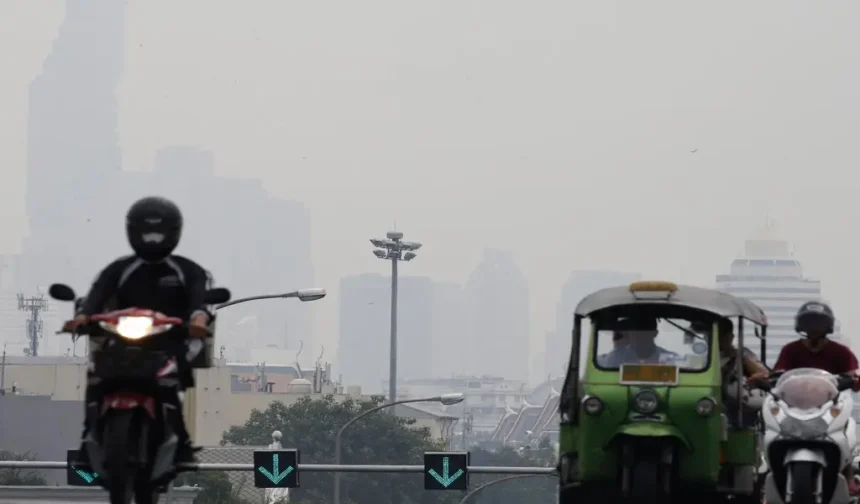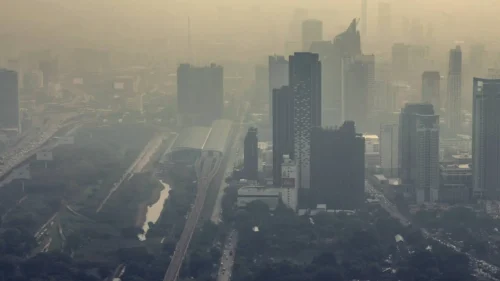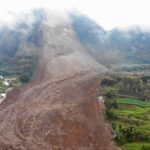In 58 of Thailand’s provinces, moderate to hazardous air pollution exists. Pollution levels are orange in 38 provinces, whereas in 19 provinces,, the PM2.5 levels are safe, meaning the air is breathable. Stay updated on the air quality and health safety situation in Thailand.
On Thursday morning, air pollution in 58 of Thailand’s 77 provinces was found to be hazardous or moderately hazardous to human health.
On its website, the Geo-Informatics and Space Technology Development Agency (Gistda) announced at 9 a.m. that ultrafine dust had reached levels of red, which indicates that it is hazardous, in twenty provinces and orange, which indicates that it is beginning to harm health, in thirty-eight provinces.
Twenty different provinces, the majority of which are located on the Central Plains, were found to have red levels of particulate matter with a diameter of 2.5 micrometres or below (PM2.5).
Over twenty-four hours, they varied from 73.5 to 117.1 micrograms per cubic meter of air. The cutoff point safety cutoff point
Samut Sakhon had the highest red level, 117.1, followed by Samut Songkhram (109.1) and Rayong (103.9). Samut Sakhon was the highest on the list.
Red levels in the two-digit range affected Seventeen other provinces, which ranged from 75.3 to 99.4.
The following cities were listed in decreasing order: Nakhon Pathom, Ratchaburi, Samut Prakan, Phetchaburi, Nonthaburi, Bangkok, Phitsanulok, Pathum Thani, Ayutthaya, Chon Buri, Suphan Buri, Kamphaeng Phet, Chachoengsao, Chai Nat, Uthai Thani, Kanchanaburi, and Phichit.
Thirty-eight provinces of Thailand were classed as orange, with pollution levels ranging from 37.8 to 74.2µg/m3.
The levels of Air Pollution PM2.5 were good and moderate, ranging from 18.8 to 37.4 in 19 provinces, indicating that it was safe to breathe.
The levels of PM2.5 in fifteen provinces were considered moderate (yellow). The following names were listed in descending order: Maha Sarakham, Ranong, Chiang Rai, Chiang Mai, Ubon Ratchathani, Yasothon, Surin, Roi Et, Phatthalung, Amnat Charoen, Si Sa Ket, Nakhon Si Thammarat, Surat Thani, Chumphon, and Songkhla.
Krabi, Phuket, Mae Hong Son, and Satun were the four provinces with high ratings due to their lush greenery.
Tourism, agriculture, biodiversity, and climate change are also impacted by air pollution. For instance, many tourists may be discouraged from visiting scenic attractions due to Very poor visibility caused by Air pollution, crop yields may be compromised by reduced sunlight caused by smog, plants and soil may be damaged by acid rain caused by SO2, and greenhouse gases may contribute to global warming as a result of CO2).

Salman Ahmad is known for his significant contributions to esteemed publications like the Times of India and the Express Tribune. Salman has carved a niche as a freelance journalist, combining thorough research with engaging reporting.















